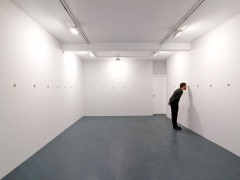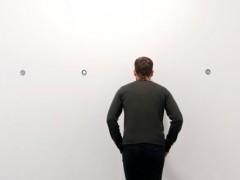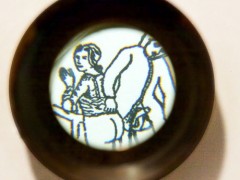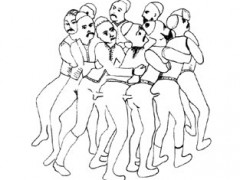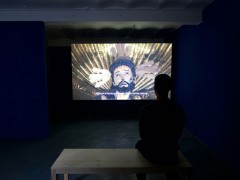Carlos Motta, Désirs.
05.09 – 31.10 / 2015
Galerie Mor Charpentier, Paris
Carlos Motta’s multi-disciplinary artistic practice studies and documents the social conditions and political struggles of sexual and gender minority communities in an attempt to produce projects of self-representation that challenge dominant and normative discourses of sex and gender. As a historian of untold narratives and an archivist of repressed histories, Motta is committed to an in depth research based practice that manifests in a variety of media including video, installation, web-based projects, live/discursive events, sculpture and drawing.
Carlos Motta : Désirs, the artist’s first solo exhibition at mor charpentier, presents two new works: Deseos تابغر†/ , Motta’s latest single-channel video and La puissance et la jouissance, an installation of drawings newly conceived for the gallery. Both pieces explore the historical representation of unconventional sexual desires as “indecent” and expose the institutional apparatuses that have produced such representations.
La puissance et la jouissance is a room-size installation composed of twenty miniature letterpress printed drawings installed behind the walls and made visible only by looking through with magnifying lenses. The drawings are based on a variety of historical images that depict unconventional sexual practices such as scenes of bestiality, hard gay sex practices, representations of female sexuality, Roman mythological figures engaged in sex, and religious iconography that has been appropriated by gay culture. The piece invites the viewer to experience the ways in which certain desires were historically constructed as unnatural and consequently rendered marginal and invisible. The piece’s title references Copi’s cartoon La puissance ou la jouissance made for the Front Homosexuel d’Action Révolutionnaire’s Rapport contre la normalité from 1971.
The video Deseos / تابغر†reveals the ways in which medicine, law, religion, and cultural tradition shaped dominant discourses of the gendered and sexual body through the narration of two parallel stories. The first is that of Martina, who lived in Colombia during the late colonial period of the early 19th century and who prosecuted Martina in 1803 for being a “hermaphrodite”. The second is the life of Nour, who lived in Beirut during the late Ottoman Empire and who was required to marry her female lover’s brother after her mother found them making love. The video presents an imaginary correspondence between these women. Separated by geography, culture, and religion they both faced the consequences of engaging in same sex relations and defying gender norms.
Deseos / تابغر†was commissioned by Council (Paris) and co-produced by Hordaland Kunstsenter (Bergen), MALBA—Museo de Arte Latinoamericano de Buenos Aires, Röda Sten Konsthall (Gothenburg), Galeria Filomena Soares (Lisbon) and mor charpentier (Paris).
This post is also available in: Spanish

 Home
Home
